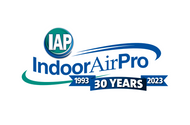Mold Testing And Remediation
We Get Rid of Mold, The Right Way.
Mold is a type of fungus that can grow on the walls, floors, and ceilings of a structure and its contents. There is much more to mold removal than meets the eye. Indoor Air Professionals has provided expert mold evaluation and remediation services for hundreds of homeowners and commercial buildings. Mold can make you sick, so proper removal is not something to leave to amateurs. Some people exposed to mold spores can have reactions such as asthma, eye irritation, fever, wheezing, inflammation in the lungs, and skin rashes.
IAP is a New York State Licensed Mold Assessor and Mold Remediation Contractor (NYS License #00222). New York State law requires an independent licensed mold assessor to perform the initial assessment to write the Mold Remediation Plan. An independent licensed mold remediation contractor should then perform the mold remediation to perform the Mold Remediation Work Plan.
Our problem-solving expertise means faster solutions to even the toughest mold challenges. We provide turnkey remediation solutions including, treatment/removal of contaminated materials, HVAC system cleaning & decontamination, environmental controls & structural drying.
Understanding A Typical Mold Project
The following are some general steps to help you understand what is typically involved in mold remediation and removal. These steps are an example. Your IAP representative will determine the proper steps for your specific project and can answer any questions you may have.
Step 1: Preliminary Mold Evaluation
We examine the water intrusion and determine the extent of the mold contamination. We make an initial determination for the following:
- Moisture corrections
- Type and extent of clean-up
- Type or extent of treatment
- Need for more extensive evaluation
- In some cases, air and or surface samples to be taken at this phase
Step 2: Extensive Investigation
We determine the extent of the contamination. This can be tricky due to the fact that mold contamination is hidden. This step often involves air and or surface sampling.
Step 3: Development Of Scope Of Work And Specification For Remediation
Based on the information gathered in the previous steps, a project abatement plan is developed that addresses:
- Correction of moisture/water intrusion
- Designation of areas, building materials, etc. that are too removed or cleaned
- How non-contaminated areas are protected
- Management of pressure relationships
- Level of personal safety requirement
- Contractor experience and credentials
- Other issues that must be addressed for a successful abatement/remediation project
Step 4: Microbial Abatement/Remediation
We follow the plan as developed in Steps 2 and 3. This work is best performed by an experienced and properly credentialed mold remediation company as IAP.
Step 5: Project Clearance
We perform visual inspection along with sampling and analysis of the space to confirm the success of the abatement/remediation.
In addition to mold samples, we can provide Indoor Air Quality Monitoring with our Gray Wolf indoor air quality monitor. This monitor data logs readings every 15 minutes and tests for Temperature, Carbon Dioxide, Carbon Monoxide, Relative Humidity, and Total Volatile Organic Compounds (TVOC's). These measurements give you a general idea if you have good indoor air quality inside your building or home. A final report is provided with all of the data, along with recommendations for improvement.


